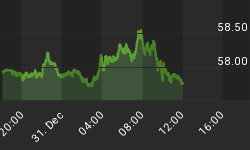The following is a summary and extension of my post-Employment tweets. You can follow me @inflation_guy (and tell your friends!)
- 175k +25k revisions, nice jobs figure. Oh, but Unemployment up to 6.7%. Love how these seem to always provide opposite surprises.
- One of my favorite labor charts. Want a Job Now, versus the Unemployment Rate:

- 1 way to add more jobs is to have em all work less. Is this an Obamacare effect since part-timers don't count?

- ...regardless, fewer hours worked -->lower output. Expect more downward revisions to Q1 growth ests. Q2 too, if this is ACA.
- If we all end up with jobs, but we're all working only 30 hours per week, is that better than if only 93% have jobs, working 40?
It will be interesting over the next few months to see if the Hours Worked figures are weather-related (as will be claimed). I suspect that for the most part, they are not. Notice that if there was any weather effect over the last few years, it is not noticeable in the data (nor is it apparent in the unrevised data, incidentally). So, while this year's weather was colder and snowier than usual, I am skeptical that this can account for more than a small downtick in the hours worked figures.
I rather suspect that the drop is more likely to be attributable to the definition of what constitutes a "full time worker" under the Affordable Care Act. And the question I asked rhetorically above is actually worth thinking about seriously because, looked at one way, the ACA is a jobs program: it will tend to cause businesses to cut back on full-time work and replace those people with more part-time work. The effect should be to cause the Jobless Rate to decline along with Hours Worked. But is that a good thing (because more people have some job) or a bad thing (because people who formerly had a full-time job now only have a part-time job)?
That's a normative question, not a positive question. But I would think that one effect would be to push more people from what we think of today as "middle class" to lower-middle class, while perhaps raising some who were previously in poverty to be also lower-middle class. I don't think this was one of the purposes of the law - because frankly, it doesn't seem that much economic thought went into the design of the ACA - but it is interested to reflect on.
I don't know what to make of the "Want a Job Now" chart. Let me explain that series, first. "Not in the Labor Force" implies that these people aren't even looking for jobs, because if they were then they would be counted as unemployed. But, despite the fact that they are not looking, they would like to have a job and would take one if it was offered. While the Unemployment Rate is falling, almost as many people are in the "not in labor force but want a job now" category as were in that category at the beginning of 2011. Why aren't these people looking?
A fair number of these workers, some 2.3mm of them, are described as "marginally attached" because they've looked for work in the last 12 months, and want a job, but haven't looked in the last 4 weeks so that they aren't counted as part of the work force. And those are the ones who are holding the category up (see Chart, source Bloomberg).

Some of those workers are not looking because they are "discouraged", but that only represents about 750k of the 2.3 million or so in this category (and discouraged workers have fallen from about 1 million in 2011, so the decline is consistent with the Unemployment Rate).
So, we are left with a category of people who have looked for work in the past, and would take a job if it was offered, but haven't looked in the last month. Or the month before. Or the month before. But, at some point, they had at least done a cursory search of the wanted ads.
I think the story of these "marginally attached" workers is worth studying. Are these structurally-unemployed people, who should be counted as such? Are they incentivized to remain out of the work force due to governmental benefits they receive? Or are they, and the decline in the labor force participation rate generally, telling us that the jobs aren't coming back (or that the newly-created jobs are of lower quality than the old jobs)? I don't know, but none of the answers is good. We want to see this number decline.
The story of the declining hours worked is potentially much more serious, though - partly because it is a new effect. The nation's total output is number of employees, times average hours worked, times output per hour. If the number of employees is rising, but they're working less, then unless productivity rises the total output (that is, GDP) won't grow very quickly. This could be an early recession sign, or it could be a consequence of the ACA...or it could be a sign that the ACA is pushing a fairly non-robust economy towards the recessionary tipping point. Again, none of these things are good.
So, while the stock market roars its approval about this Employment number, I growl my displeasure. But this is normal.
You can follow me @inflation_guy!
Enduring Investments is a registered investment adviser that specializes in solving inflation-related problems. Fill out the contact form at http://www.EnduringInvestments.com/contact and we will send you our latest Quarterly Inflation Outlook. And if you make sure to put your physical mailing address in the "comment" section of the contact form, we will also send you a copy of Michael Ashton's book "Maestro, My Ass!"
















